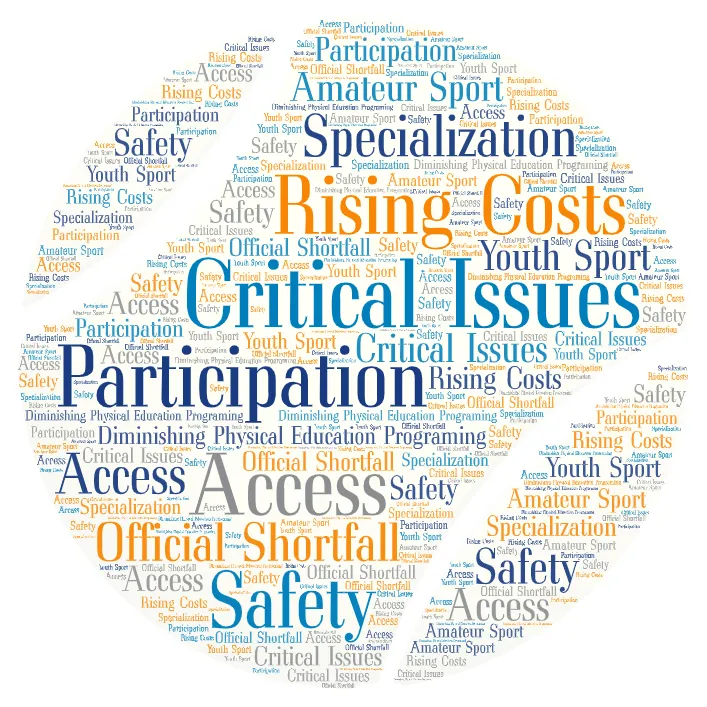Truth About Investment in Youth and Amateur Sport

Share This Post
The Expanding Landscape of Sport Investment
As if you needed more evidence, this recent article in Barron’s by Andy Serwer does a really solid job outlining the current landscape of sport industry investment. And yep, it’s huge.
Serwer outlines many of the things we already know about in the industry – huge franchise price tags, verticalization of investable assets to include media, and of course, the widening of sport opportunities for investment such as women’s sports, pickleball, and so much more.
Yet the article comes a bit short of surfing the tidal wave of investment that is already spreading like wildfire in the youth and amateur sport ecosystem.
From content (sporting events taking place in Your Town, USA) and facilities to lodging tech solutions and other technology, not to mention the array of suppliers in your organization’s orbit, the roll-up is happening—and it’s happening fast!
Call it the Wild West. Call it a money grab. Call it a maturing market.
But whatever you do, don’t call it “all about the kids.”
This is big money with big consequences.
The Consequences of Big Money in Youth Sport
Sport is broken in a thousand ways and while multi-million-dollar mergers and private equity investments are inevitable, they are not in it “for the kids”. They are in it for the dollars. Not your kid, or my kid. Plain and simple.
The organization may still have a valiant mission and, ideally, performance metrics by which they actively measure achieving that mission. But more likely than not, big dollar investment has put them in the minority ownership position, and while they may run the day-to-day operations, the revenue growth expectations and true control is being handled by investors like the man behind the curtain in the Wizard of Oz. This is where those likely deviations from the founding mission begin to creep in. We just don’t yet know what the long-term ramifications of Big Investments are.
I recently listened in on a to-remain-nameless webinar about the growth of youth sport across the US. When asked how their (well-invested) companies in the youth sport space were addressing critical issues of participation, access, rising costs, specialization, official shortfall and safety, diminishing physical education programming in schools, and other issues, the panelist basically said, “it’s a problem” and quickly shifted to the experience and efficiencies to be gained through their products and services.
I can’t say I fault them.
It may have started as their job, once upon a time when their startup companies (with founders likely long gone by now) were just a glimmer in their eyes. Their obsession eventually came to life through blood, sweat, and tears shed in their garages at the wee hours of the night. But not any longer.
Market infancy led to good ideas. Sweat equity led to revenue. Time passed. This coincided with a maturing and (debatably, in our humble opinion, as the research is shaky) a stabilizing market.

Success in the form of commas and zeros led to eyeballs…of sharks.
I call it the “Amoeba Affect”. A business is a blob, much like an amoeba. The blob grows (has some success and makes some money). Eventually a bigger blob (business) comes along and gobbles it up. That one floats around for a bit of time, and with the injection of new capital, resources, efficiencies, and experience, it looks appetizing to an even BIGGER amoeba that promptly absorbs it. And the cycle continues until maybe the SEC comes calling about antitrust (Hello, Live Nation/Ticketmaster).
I get it. I’m a true capitalist at heart. I love seeing people take an idea and go make something out of it. Heck, it’s what I’m doing with Cimarron. It’s central to the American Dream!
And it’s the world of business we live in. It’s been the environment for other business sectors for decades, and the big 5 pro sports for quite a while now. And it’s only expanding. In the sport and tourism industry, our aquarium has had many small and mid-sized amoebas doing their thing for some time. That time is in the rearview. The fishbowl’s glass has shattered, and we’ve spilled into the ocean. Remember what lives in the ocean! (Cue Jaws theme song…)
Future Implications for the Sport Industry
Now to answer the question posed about addressing those critical issues in youth and amateur sport.
They can’t answer because they don’t know. I don’t think it’s really a lack of care or lack of interest – After all, those people have kids in youth sports, too! Honestly, it’s just a different game. The big leaguers aren’t playing at Williamsport. It’s not their job anymore. The X’s and O’s on the clipboard have been replaced by $’s and Δ’s. Ultimately, the SOLE objective of an investment firm is to – newsflash – make a RETURN on that INVESTMENT. Again, leading us back to those pesky consequences.
The risks need to be mitigated, and the rewards need to be high. Like in sport, sometimes they win, and sometimes they lose. But if they don’t win more than they lose, they get cut from the team.
Hear me when I say, I’m not claiming that investment in sport – youth or otherwise – is unequivocally bad; after all, it also spurs and funds innovation. Truth be told, Cimarron works with several companies doing great things that have taken in investment and we help others with their investment strategies. But we’re only kidding ourselves (and moving further away from solutions to the real problems facing the industry) if we pretend that a big brand’s “corporate social responsibility” program (aka: Marketing) is going to be the savior of sport.
The 19th Hole with Stoll
So, what are we left to do? Stand on a stump and preach like the Lorax analogy I’ve used for so long that I’ve now seen others using it? (No pride of authorship there, have at it.)
I don’t have a perfect answer, but I do know a few things.
- It’s our job as ambassadors for sport in our cities, states, and countries to ensure the activities taking place in our communities are properly leveraged as INPUTS to develop the OUTCOMES we desire for measurable improvement in key areas through sport. No one else – especially not private equity – is going to advocate and for the “So what?” of sport like we can. This is our duty as stewards in our respective roles and organizations. Need a lesson on this? Stay tuned for more.
- I’ve said it a million times before, and I’ll say it again. It is absolutely vital that we expand our definition of success beyond hotel room nights to incorporate metrics that truly aim to solve those critical issues of sport in our communities. This is why legacy programming is so important. It’s longitudinal, not just what happens on any given weekend in your town. We can help with this, and, by the way, we firmly believe this is going to become more and more relevant as we look to the future. (Yes, another teaser.)
- You don’t have to reinvent the wheel; you may just need to change its size or put it on your own bike. There are many practitioners around the country, industry leaders – and even some academics! – who get it. And not only do they get it, but they are also doing it. Building, running, trying, brainstorming, reimagining, risking, adjusting, proving, thriving. No one is going to demand it. Not the industry, not your hotels, not your facilities, probably not your board or even your elected officials. Yet the positive difference still remains to be made! This notion is the entire premise behind our forthcoming Creating Communities Through Sport publication, to foster thinking about things differently, learn from others, glean insights, and spur action.
Our industry is in a pressure cooker. Not all will remain. It will not look the same in 10 years because it cannot look the same in 10 years. It’s time for a new thing.
One of my favorite Bible verses is Isaiah 43:19:
“For I am about to do something new. See, I have already begun! Do you not see it? I will make a pathway through the wilderness. I will create rivers in the dry wasteland.” New Living Translation (1996), emphasis mine.
Let’s go do the NEW thing in the areas of influence throughout our lives – especially in sport and tourism!
Cimarron’s research, products, and services can help your sport and tourism organization be prepared for when the “big sharks” come. Contact us to learn how.
Evoke a thought.


